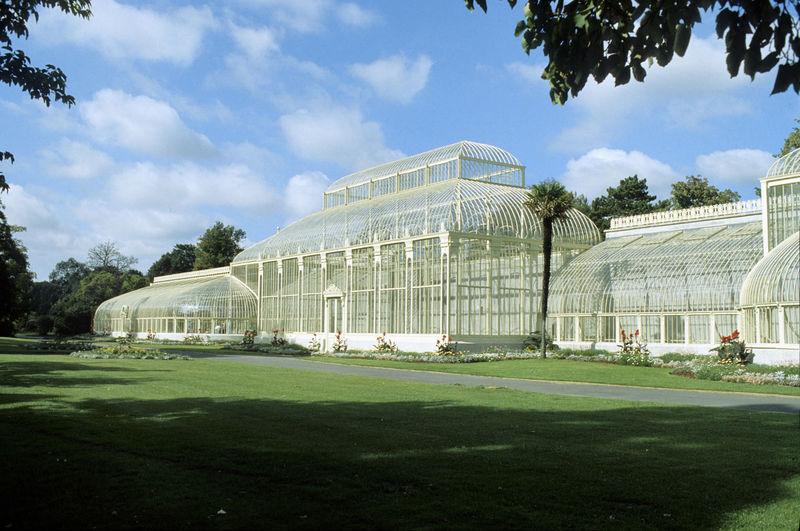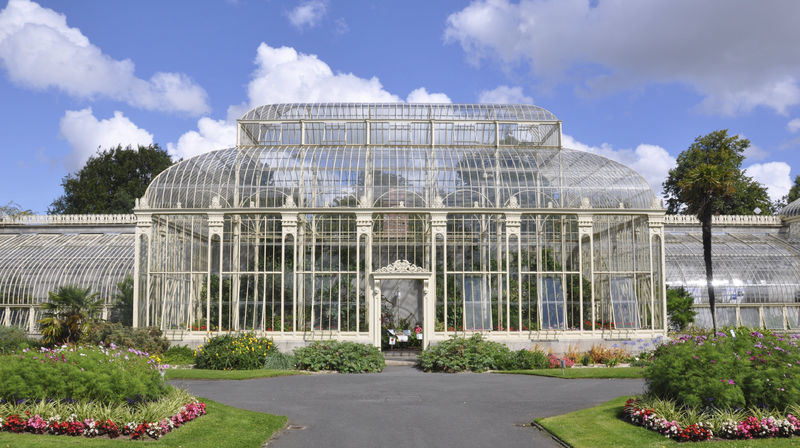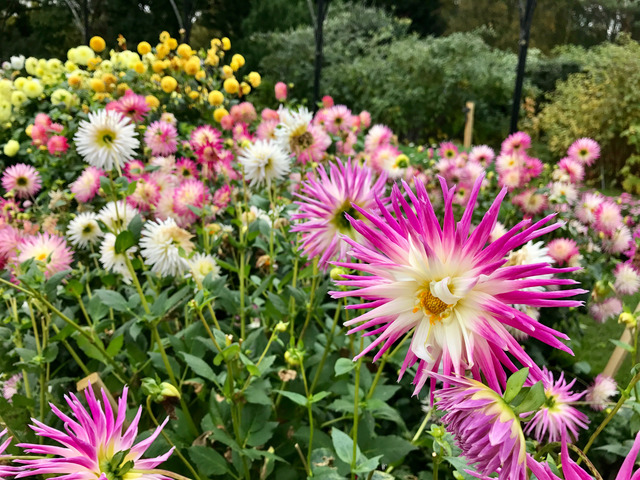Dublin’s National Botanic Gardens
The Botanic Gardens Dublin are a stunning green space filled with trees, flowers, fountains, bridges, perfectly manicured hedges and glasshouses. Extensive grounds of 48 acres are ready to be explored and include 300 endangered species of plants. Some species that have been conserved here are even extinct in the wild. Overall, you can see a plant collection of approximately 20,000 species as well as an arboretum and impressive glasshouses.
The most striking of these are the glasshouses which are known as the Curvilinear Range and date back to between 1843 and 1869. They are wrought and cast iron and with some refurbishment and maintenance survive to this day. The glasshouses have a curved roof which stands out as you approach.
Tours occur daily to educate visitors on the plants, the research and conservation taking place and their importance. The collection is scientific and dedicated to collating information on the flora, investigating threats to native species, conserving endangered species and there is even a DNA research lab on site. For visitors who want to learn about gardening or gain the skills to keep their own plants alive, regular training courses are run in gardening. Exhibitions are run often to educate the public about the work being done and the different types of flora.
The Botanic Gardens had a rather poetic beginning; poet Thomas Tickell owned a house and estate in Glasnevin that were sold to the Irish Parliament in 1795. They were then passed on to the Royal Dublin Society so that Ireland’s first botanic gardens could be established on the grounds. A stunning site that remains to this day from these humble beginnings is a double line of yew trees called ‘Addison’s Walk’.
Having continued to expand over the years, the Botanic Gardens are a haven just outside of the bustling city streets. It is a place to walk, take in the beauty of nature and reflect. I breathe in the cold air on this frosty day and relax as I walk across this wide expanse of land dedicated to the conservation of local and international flora. The greenery and bursts of colour are breath-taking. It is difficult to walk the paths here and not be impressed by the surroundings.
As you stroll across a charming bridge over a stream surrounded by foliage thinking it can’t get prettier, you come across yet more sights. There are bubbling fountains, arrays of colourful flowers, a rose garden, ponds, enormous glasshouses filled with plants of all types and a vegetable garden. Wooden benches around the Botanic Gardens are lovely for a well-earned rest after all that walking or for sitting and taking in this peaceful and beautiful atmosphere. The scent of nature is everywhere – a natural floral perfume and the scent of fresh grass.
I walked through the museum collections and the curvilinear glasshouses which house native and tropical plants in a perfectly climate controlled environment. One of these is The Great Palm House; a structure which was built in 1884. It is 80 feet wide and 100 feet long, originally made in Scotland and then shipped to Ireland and assembled. Inside you can find tropical trees, palms and pot plants. It was restored over two years and re-opened in 2004. The Palm House is well-known throughout Europe, having won an award for its restoration in the European Union Prize for Cultural Heritage/Europa Nostral Medal in 2006. These glasshouses add to the charm of the greenery and flora of the Botanic Gardens. Created to house plants of all types that require a controlled environment to thrive, they are notable additions to the natural garden.
The grounds are beautifully maintained and entry is free. The Visitor’s Centre opened in 2000 and houses displays relating to the history and aim of the gardens as well as a lecture theatre and restaurant. There are portraits on display created by Anne O’Leary which focus on the notable people who have been involved in the development of the Botanic Gardens and their history and growth.
A figure which surprised me was the skull and antlers of the Giant Irish Deer which hangs on the wall inside the visitors centre. Originally it hung in Kilmacurragh House, which is a sister garden of the Dublin’s National Botanic Gardens. It is an unexpected decoration which has its own significance as the largest deer that ever lived. It died out just 8-10,000 years ago and remains have been found around Ireland. The Great Irish Deer is commemorated in this way, a reminder of wildlife now extinct.
Dublin is a city that is fortunate to be home to plentiful green areas – even being home to Phoenix Park, which is one of the largest inner city parks in the world. The Botanic Gardens are unique as they are created as a pure botanic garden rather than as a public park. As an important effort for the natural environment and Ireland’s heritage, the gardens are almost a hidden gem in Dublin if you don’t venture outside of the city centre.
They are only 3.5km north-west of Dublin’s city centre and you don’t need to be a botanist or horticulturalist to get the most out of the Botanic Gardens. Set along the Tolka River and next to the Glasnevin Cemetery, it is an inner city oasis that makes you feel as though you have gone much further than just a few kilometres outside of Dublin’s city.
As a dedicated botanic garden, it is created for science and not as a garden which may be opened purely for enjoyment and has all areas accessible to the public. This is not the case at Dublin’s Botanic Garden; activities such as picnics, dogs, jogging are not allowed here. This is an appeal for the discerning visitor – it is a quiet escape. Walking through the gardens inspires an appreciation for the work done here and the conservation and study of flora




